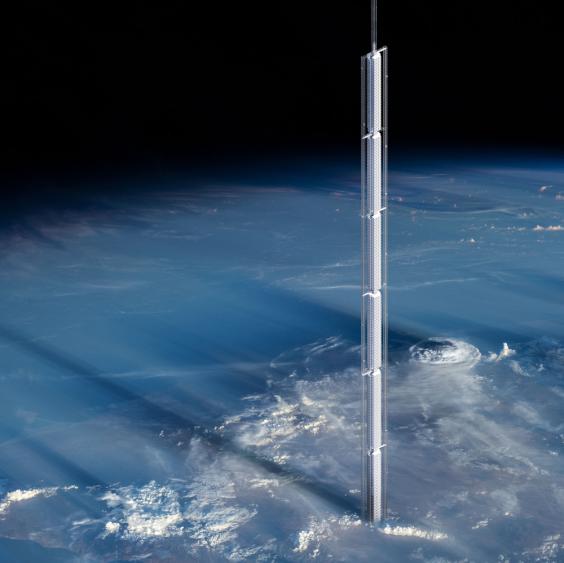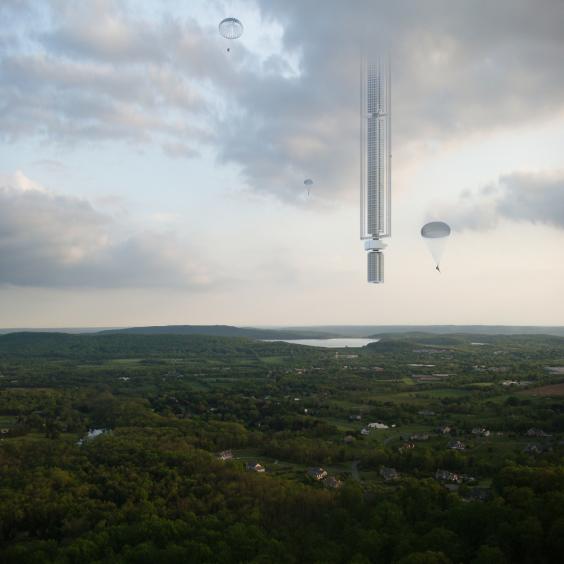Analemma Tower would be suspended from comet 31,000 miles above planet's surface
Plans to suspend the “world’s tallest” skyscraper from an asteroid orbiting Earth have been unveiled by an architecture firm.
Analemma Tower would be hung using reinforced cables from a comet 31,068 miles above the planet’s surface, with the orbital path taking the building in a figure of eight pattern over various cities, including New York and Havana.
The outlandish design has been created by Clouds Architecture Office, the same company behind proposals for a house on Marsand a cloud city.
Building from the sky down will “overturn the established skyscraper typography,” the firm says. “Through the course of history humanity has been able to affect the environment on increasing scales.”
The proposals suggest building it in Dubai, due to its proven ability to construct skyscrapers at a fraction of the cost of the US.
The Analemma Tower would be set up in sections, with the point closest to Earth being dedicated to entertainment, shopping and dining. Above that would be office space, while the middle compartments would be used for gardens and residential spaces.
There are also plans for a place of worship, and at the very top a “funerary” section.

The designers plan to use space-based solar panels that would have constant exposure to sunlight, while water could be captured from clouds and rainwater.
The skyscraper would be so big that day time at the top would be 45 minutes longer than at the bottom, due to the curvature of the Earth.

But the architects, while researching atmospheric conditions for the project, discovered that people would be unable to tolerate conditions outside at the top of the building.
“While there may be a benefit to having 45 extra minutes of daylight at an elevation of 32,000 metres, the near vacuum and -40C temperature would prevent people from going outside without a protective suit,” the firm said.
The company believes capturing and redirecting an asteroid will soon be a realistic concept, citing the European Space Agency’s Rosetta mission, which showed it was possible to land on a spinning comet.
No comments:
Post a Comment